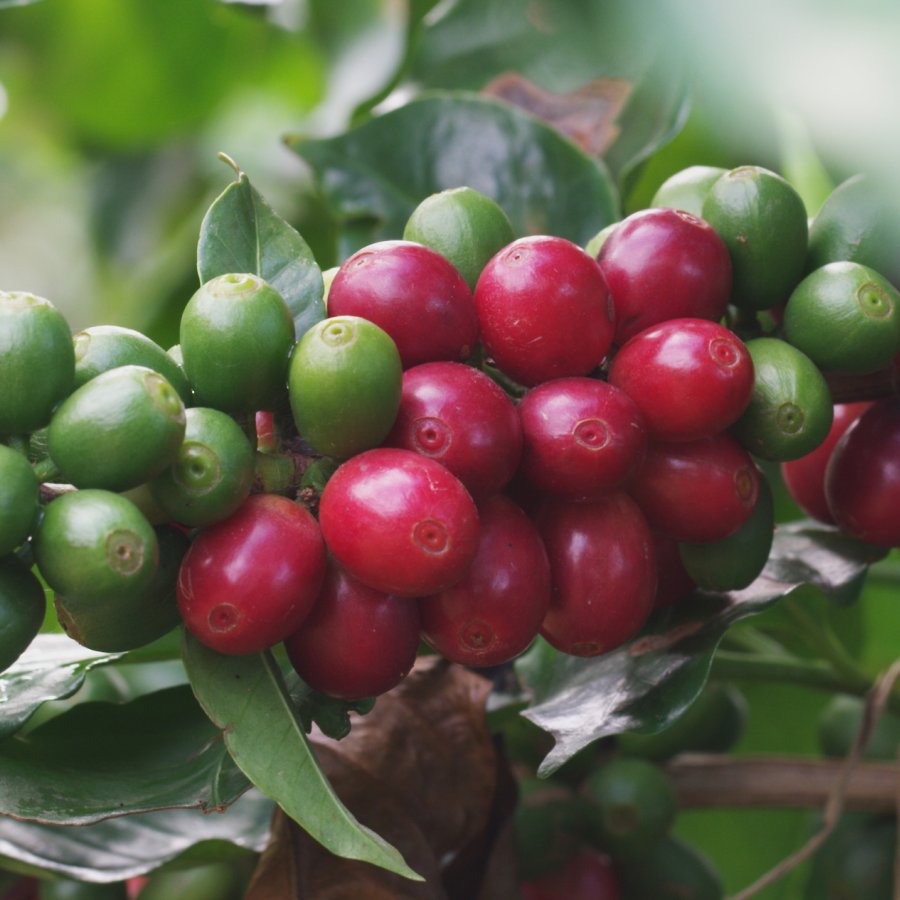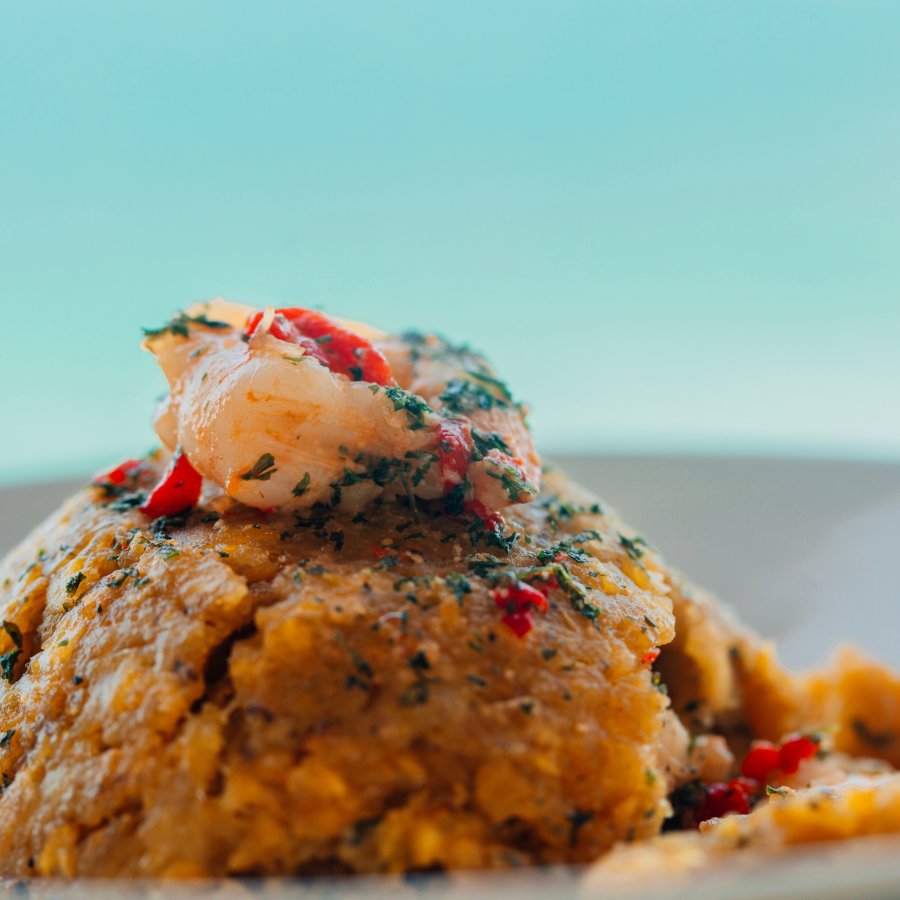Heaping portions of crispy, garlicky, fried plantains; slow-roasted, succulent pork; savory rice and beans chased with a cold local beer or fruity rum cocktail, and that's just your first meal.
Having the opportunity to enjoy authentic Puerto Rican food is a highlight of many visitors' experiences. The vibrancy of Puerto Rican culture comes alive in its dishes, a celebration of flavors that visitors have the opportunity to indulge in. Some of the favorites are mofongo, tostones, pasteles, arroz con gandules, tembleque, and coquito.
Here is a guide to some of the dishes that you shouldn't miss out on:

Traditional Puerto Rican Mofongo.
Mofongo
Puerto Rican comfort food at its finest...
Mofongo is traditionally made from deep-fried green plantain pieces mashed with garlic and either salt-cured pork, pork crackling, butter, or oil. Some recipes use a salty broth to soften the plantains while mashing.
Mofongo can be served as a side dish or stuffed with any meat, such as stewed chicken, crab meat, octopus, skirt steak, fried pork, seafood, or stewed vegetables. Other variations of mofongo include yuca mofongo and trifongo, made with green plantain, sweet plantain, and yuca.
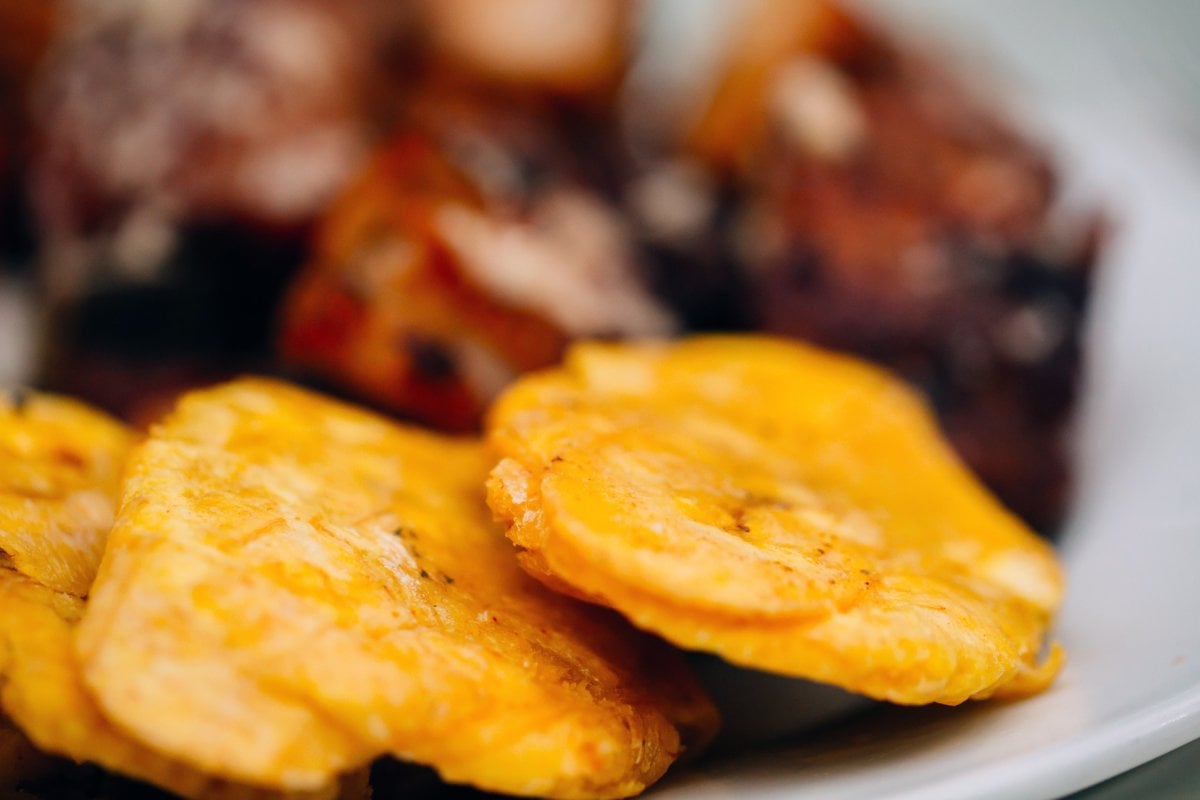
Plantains can be sweet or savory, depending on the ripness.
Tostones and amarillos
These are two traditional ways to prepare plantains. Tostones are made from green plantain, which is savory. The plantain is cut into thick wheels marinated in water and garlic, then deep-fried in oil to soften, smashed, and deep-fried again until crispy. Amarillos, on the other hand, are ripe plantains cut into pieces and fried until the outside is almost blackened, and the inside is soft and sweet.
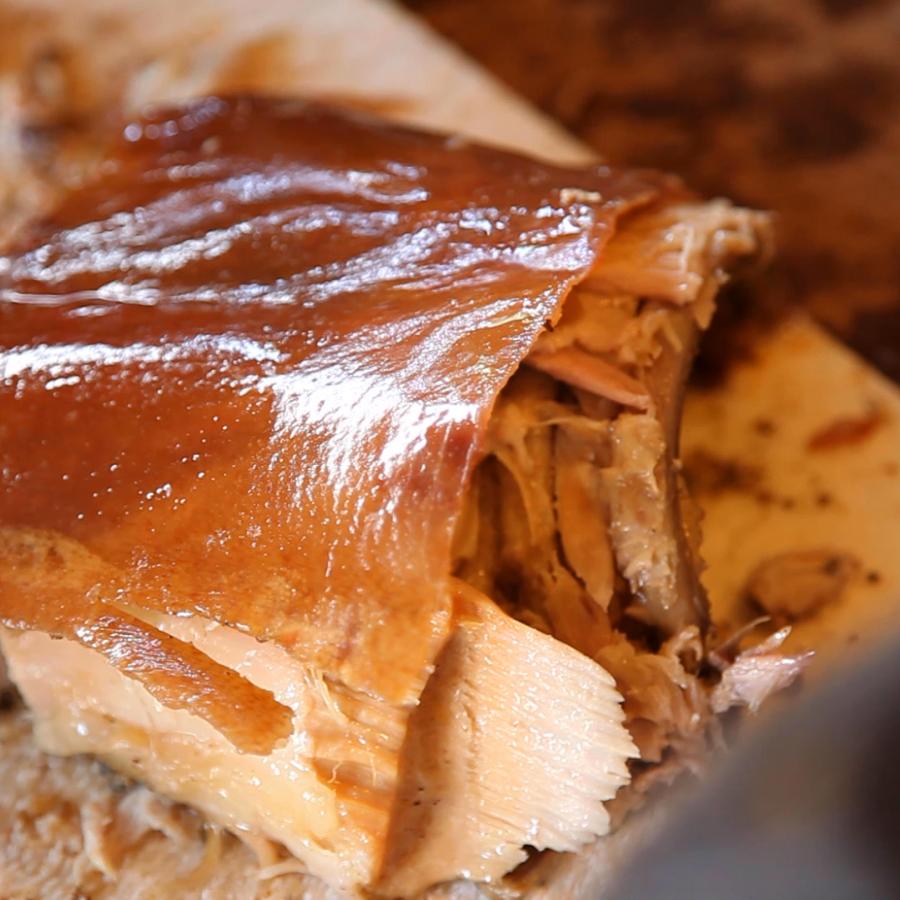
Plan a trip to Guavate to sample some of the best-roasted roasted pig in Puerto Rico.
Lechón asado
A Puerto Rican culinary legacy! To prepare this delicacy, first, a whole pig (lechón) is marinated in adobo (a mix of garlic, oregano, black pepper, vinegar, and water) and then slowly roasted over coals for several hours until the meat is juicy and the skin crispy. To sample some of the best lechón in Puerto Rico, plan a day trip to Guavate, where the road headed up the mountains of Cayey is lined with lechoneras (pork restaurants) serving locally sourced pork. Another specialty pork dish is pernil, or pork shoulder, seasoned with adobo, and roasted in the oven.
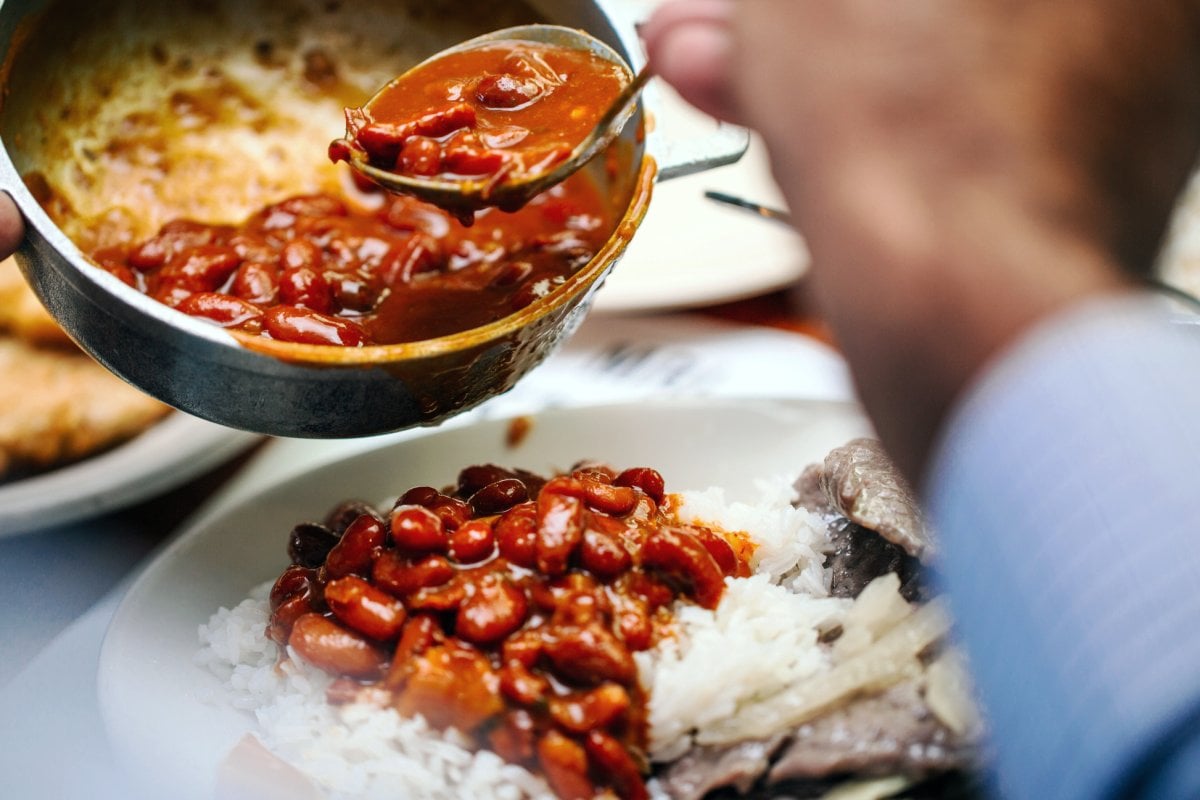
Arroz y habicuelas are the staple side dish in Puerto Rico.
Arroz y habichuelas
Rice and beans are the quintessential Puerto Rican side dish. Pink beans are stewed with onions, peppers, garlic, ham hock, calabaza squash, and sofrito — a cooking base made by blending onion, garlic, peppers, culantro, cilantro, and oregano (as well as other herbs, spices, and aromatics depending on the family recipe).
White, medium-grain rice is cooked separately from the beans and seasoned with olive oil and salt. The two are served next to each other so you can choose how much beans to add to the rice.
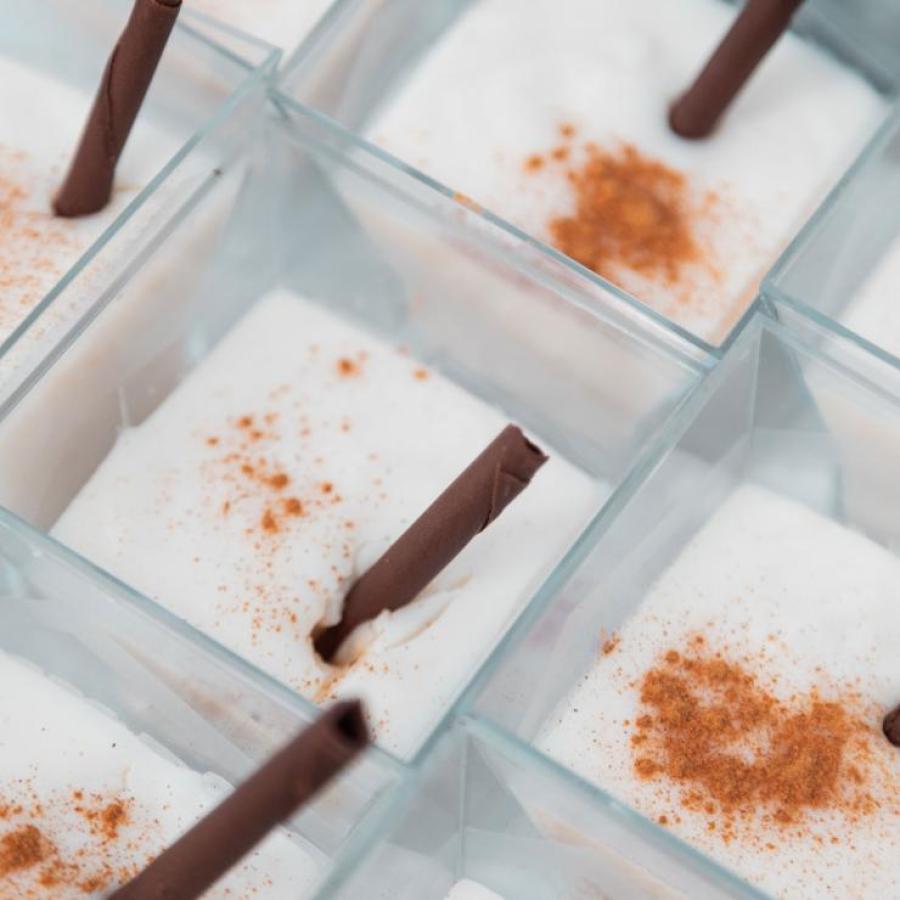
Tembleque is a favorite Puerto Rican dessert.
Desserts
The best part of the meal! Traditional seasonal desserts include tembleque, a silky coconut custard; and arroz con dulce, rice pudding with cinnamon and raisins. Other traditional desserts include flan, a vanilla custard cake; and casquitos de guayaba, guava paste paired with local white cheese.
There is also a version of eggnog called coquito, which is made with evaporated milk, condensed milk, coconut milk, cinnamon, and white rum. There are also flavored versions of coquito, including chocolate, pistachio, and guava.
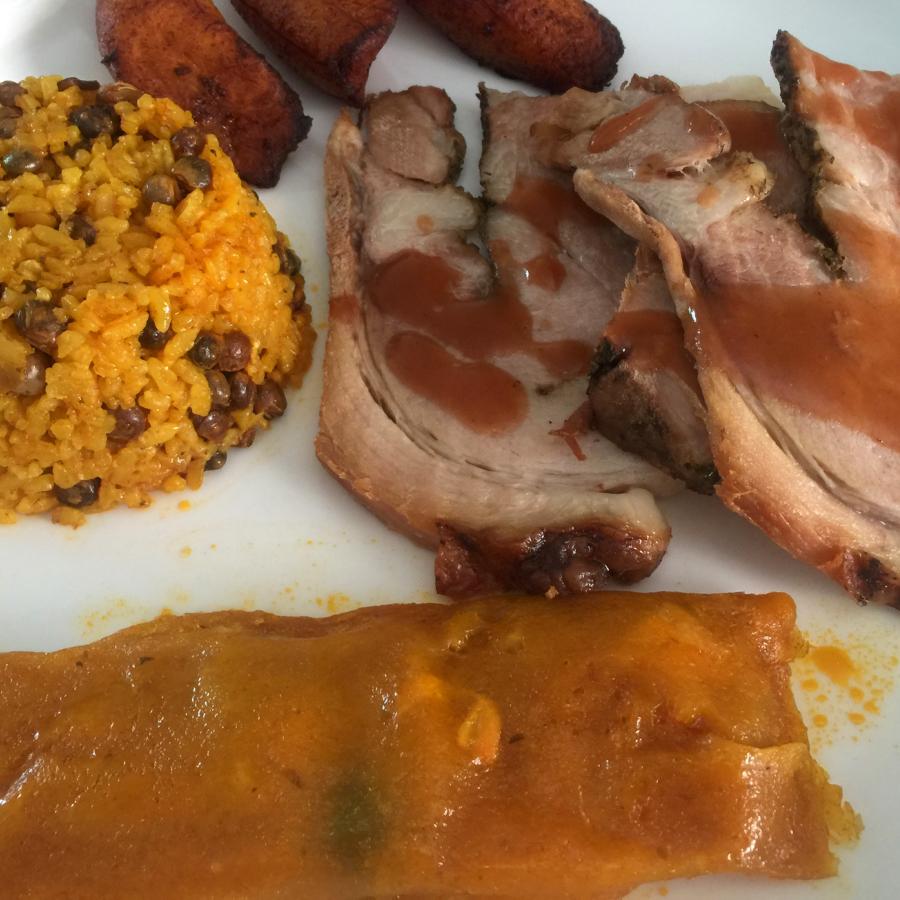
Pasteles are a local specialty that cannot be missed at parties.
Pasteles
A true local specialty, pasteles resemble tamales and are traditionally made with green banana masa stuffed with stewed pork meat. Sometimes yuca or other root vegetables are added; the masa can also be made with just yuca. Pasteles can also be stuffed with chicken or bacalao (salted cod), and some vegan versions have been introduced recently.
To form the pastel, masa is pressed onto a plantain leaf, the stuffing added in the center, and the plantain leaf is folded, tied with string and covered in parchment paper. The pasteles are then boiled, unwrapped, and served.
Arroz con gandules
Considered a boricua staple, this signature Puerto Rican rice dish is consumed year-round. Pigeon peas, or gandules, are small, dense legumes cooked with the rice in a large pot. First, salted pork or ham hock is sautéed in olive oil. Sofrito is then added, along with bay leaves, tomato paste, annatto, and often olives or capers. The rice and pigeon peas are then coated with this sauce, water or broth is added, and everything is cooked together until the rice is done.
Virtual Cooking and Mixology

Fritters are found throughout the Island, most commonly in open-air restaurants.
Frituras
Deep-fried treats commonly found in open-air, beachside restaurants that pair beautifully with a cold beer. These are usually stuffed with ground beef, crab meat, chicken, fish, octopus, conch, or other seafood types. There are a variety of different fritters you will find in Puerto Rico.
In Puerto Rico, our fried snacks– or fritters– are well known all over the island. Get a taste of some of our favorites, like the cod-flavored bacalaítos and meat-stuffed alcapurrias, and other crunchy snacks that makeup Puerto Rico's culinary culture.
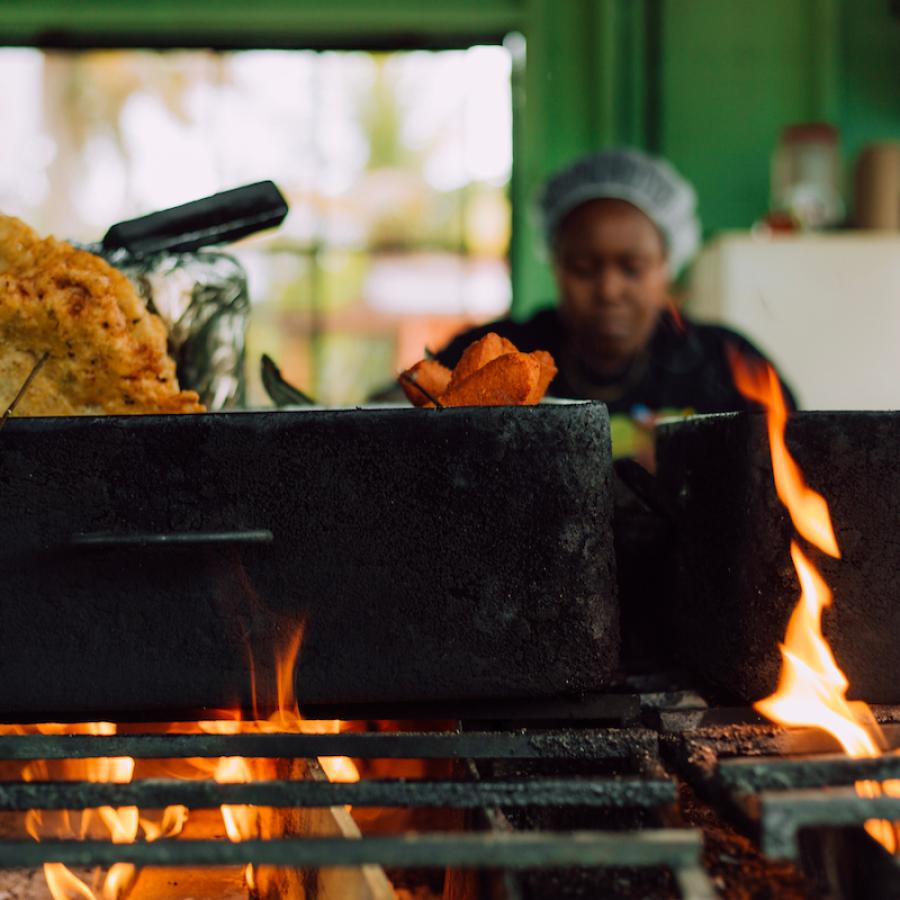
You cannot leave Puerto Rico without trying the delicious alcapurrias.
Here are a few of the common types of frituras you might taste during your visit:
Alcapurrias are torpedo-shaped fritters made from shredded root vegetables like yuca and yautía, stuffed with a choice of meat. These deep-fried snacks are normally found in open-air, beachside restaurants that pair beautifully with a cold beer. Alcapurrias are usually stuffed with ground beef, crab meat, chicken, fish, octopus, conch, or other types of seafood.
Empanadillas are a larger version of pastelillos, also stuffed with a choice of meat and fried. There’s also a popular pizza version filled with melted mozzarella cheese and marinara sauce.
Arepas are flour-based, sometimes made with coconut for a slightly sweet flavor, fried and then stuffed, usually with seafood. Locals often eat them by themselves as appetizers.
Bacalaítos are a simple batter of flour and water with chunks of salted cod and parsley, deep-fried into what look like giant corn flakes.
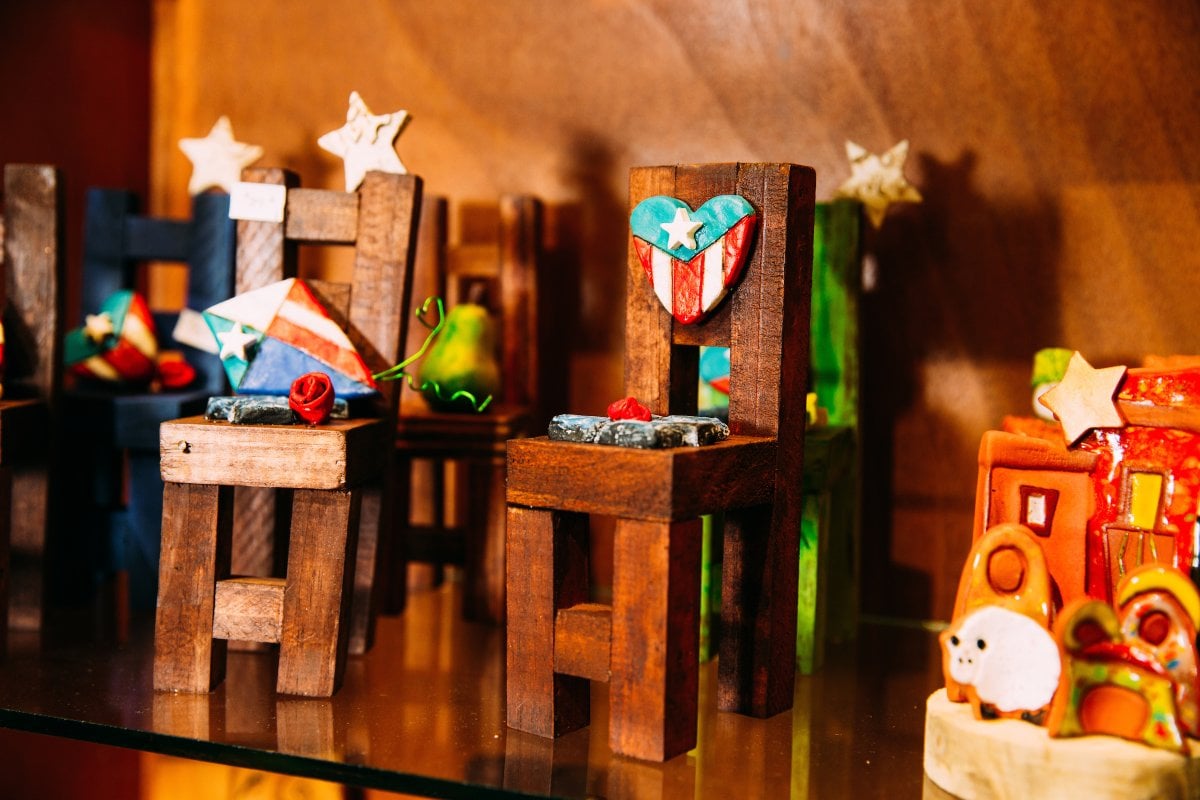
Bring a piece of Puerto Rico home
Brands of Puerto Rico seeks to tell stories through products created by Puerto Rican hands.
To export the Island's talent and creativity, the family company Brands of Puerto Rico created a platform that serves as a stage for local artisans and small business owners to showcase their products to audiences worldwide. Find local products like coffee, bread, homemade seasoning, handmade jewelry and accessories, books, traditional sweets, and more.
Paradise for Your Inbox
Get travel inspiration, news, tips and more delivered monthly.


